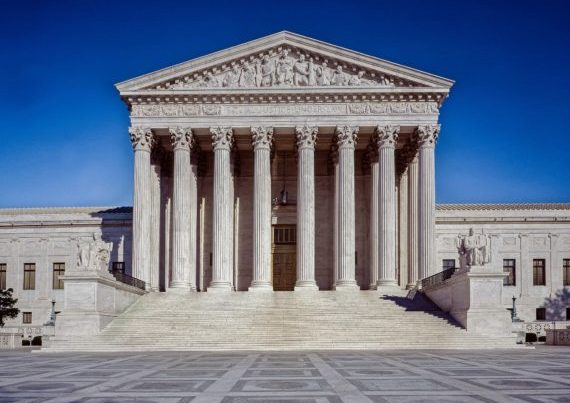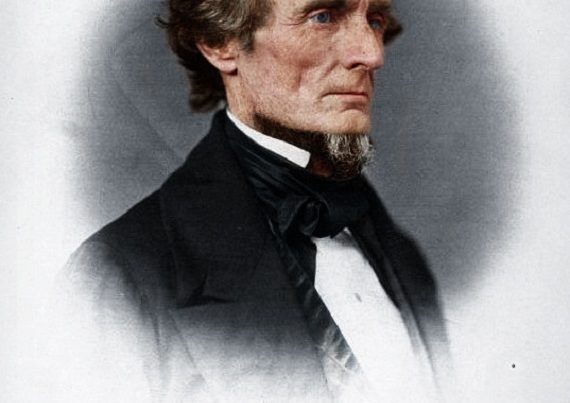The gentle wave of what had been termed “monumania” that rolled over the South and parts of the North during the late Nineteenth and early Twentieth Centuries was one which saw the dedication of numerous monuments in memory of the Confederacy and its heroes. That long dormant wave has now suddenly turned into a manic tsunami dedicated to the tearing down or covering up of all such objects through ill-conceived legislation, governmental fiat or outright vandalism. This current rush to madness will, of course, neither alter what some now consider to be a dark stain on the pages of America’s history, nor improve the lot of those who feel oppressed because they imagine their lives have somehow been adversely impacted by a government that has not existed for over a century and a half.
Even though the many hundreds of such monuments scattered across the United States, as well as the countless number of schools, public buildings, parks, highways and geographic locations named for various Confederate figures, stood unmolested for many generations, a cry developed during the past few years to remove all such objects from public view. While these voices initially represented only a small portion of the population, they were strident enough to both arouse the media’s avid attention and instill a mind-numbing sense of fear in vote and image-conscious politicians. These limited cries, however, abruptly became a nationwide shriek when a few hundred history-illiterate freaks spouting racist rants, and who cared or knew nothing about the actual controversy involved, recently managed to highjack a legitimate protest in Charlottesville, Virginia, over the removal of such a monument. This incident ignited a firestorm of anti-Confederatism that is now developing into a societal wildfire all across the nation.
In retrospect, the Charlottesville statue which has become the focal point of media frenzy, riotous nationwide protests and greatly increased monumania is one of General Robert E. Lee mounted on his horse Traveller that was erected in 1924. Five years ago, the N.A.A.C.P and similar groups, as well as some local officials, began calling for the renaming of the city’s Lee and Jackson Parks and the removal of their statues honoring the two Confederate generals. This February, the city council officially changed the names of Lee and Jackson Parks to Emancipation and Justice Parks and voted to remove Lee’s statue. The Sons of Confederate Veterans and other patriotic groups initiated a court injunction that delayed the statue’s removal for six months, and this summer a permit was issued to a local group to legally protest the removal. Sadly, a few hundred outside racists and anti-Semites with their own agendas invaded the city and were met by violent opposition groups like Antifa, the worldwide goon squad which had rioted against such sessions as the recent G20 meeting in Hamburg, Germany. In the wake of August’s bloody Charlottesville riots which resulted in three deaths, including two police officers, both statues have now been shrouded in black while awaiting their ultimate removal. At the same time in Virginia, the monument to a Confederate soldier was removed from the grounds of Randolph College in Lynchburg.
But these were merely the opening shots in the new internecine war that has now begun to rage on both sides of the Mason Dixon Line. In the South, the most extreme examples of this recent insanity have occurred in Maryland, Louisiana and North Carolina, with a lesser number taking place in Alabama, Florida, Georgia, Kentucky, Missouri, South Carolina, Tennessee and Texas. In Maryland, in spite of the fact that a native son, Roger B. Taney, had served the United States as its attorney general, secretary of war and three decades as chief justice of the Supreme Court, as well as freeing the slaves he had inherited from his father and giving them lifetime pensions, statues of Taney in Annapolis and Baltimore have now been taken down. This August, Baltimore, during the dead of night, also removed both the monument to Confederate Soldiers and Sailors and the one to Confederate Women, as well as the statues of Generals Lee and Jackson. Elsewhere in the state, Confederate monuments in Ellicott City and Rockville were also removed. In Louisiana, the mayor of New Orleans ordered that statues of Jefferson Davis, Generals Lee and Beauregard and a Reconstruction-era monument all be taken down, again at night. In North Carolina, the most violent act of monumania was in Durham, where a mob of so-called “activists” led by a female college student who has been dubbed a “freedom fighter” pulled down, kicked and spat on the statue of a nameless Confederate soldier which had silently stood guard in front of the county court house for almost a century. The statue of General Lee at Duke University in Durham was also removed after first being vandalized.
In other areas of the South, the accidentally damaged statue of a Confederate soldier in Demopolis, Alabama, will not be returned, and a memorial to both Union and Confederate soldiers will be put in its place, while in Birmingham, the mayor recently boarded up a Confederate memorial and is now facing a court action brought by the state’s attorney general. In Florida, cities such as Bradenton, Gainesville, St. Petersburg, Tampa, Orlando, Tallahassee and West Palm Beach have now all voted to remove or relocate monuments and flags, as well as renaming certain schools and highways. In Georgia, a portrait of General Lee was removed from a building at the University of Georgia in Athens. In Kentucky, the city council in Lexington has approved removing the statues of General John Hunt Morgan and former U. S. Vice-President John Breckenridge. In Missouri, the monument to the United Daughters of the Confederacy in Kansas City has been removed, and the one memorializing the Confederate dead has been taken from a park in St Louis. In South Carolina, where the murders in a Charleston church two years ago had caused the widely-publicized removal of the Confederate Battle Flag and its staff from the state capitol in Columbia, the Confederate flag and pictures of Generals Lee and Jackson have now been ordered taken down in the York County Court House. In Nashville, Tennessee, where the fight continues over removing the bust of General Nathan Bedford Forrest from the statehouse, as well as both his equestrian statue and the graves of he and his wife from a city park, Confederate Memorial Hall at Vanderbilt University, which was constructed with a donation by the United Daughters of the Confederacy, has been renamed Memorial Hall. On a slightly more buffoonish note, the historic Orpheum Theater in Nashville announced it would end its thirty-four year tradition of showing “Gone With the Wind” each summer.
Finally, in Texas, the University of Texas, where the statue of President Davis had been removed in 2015, has now ordered that the statues of Generals Lee and Albert Sidney Johnston, as well as the one in memory of Confederate Postmaster General John Reagan, who had served Texas before and after the War as a U. S. Congressman and Senator, must also be removed from the Austin campus. But the madness in the Lone Star State does not end with Confederate statues…the Six Flags Over Texas amusement park in Arlington, as well as the one in Atlanta, Georgia, have now decreed that in order to “bring people together,” five of the flags which had represented the “Six Flags,” France, Mexico, Spain, the Republic of Texas and the Confederacy, all had to be hauled down and replaced with only the United States flag. This is not only an affront to the people of France, Mexico and Spain, as well as the memory of the former Texicans, but renders the name of the facilities utterly meaningless. The even more inane part is that the supposedly offending banner in this case was not the instantly recognizable Confederate Battle Flag, but the C. S. A.’s first national flag, the “Stars and Bars,” which undoubtedly would be unfamiliar to a majority of the parks’ visitors.
There are also a number of such moves outside the South, such as schools in California that had been named for Robert E. Lee and have now been renamed, a Jefferson Davis highway plaque in San Diego that was taken down, and the Confederate memorial in a Los Angeles cemetery which has been removed. In Wichita, Kansas, the Confederate banner that was part of a historic flag display has been ordered taken down by the mayor. In Helena, Montana, the century-old Confederate Memorial Fountain has now been removed. In New York, the plaque marking a tree on Long Island that had been planted by Robert E. Lee two decades prior to the War and a marker placed in New York City in 1936 by the United Daughters of the Confederacy have both been removed. Even some tiles in a New York City subway station which actually represented a crossroad, but to some resembled the Confederate Battle Flag, were ripped from the walls. In Ohio, a Confederate memorial in Franklin was removed at night by the city, a Confederate soldiers memorial in a Columbus cemetery was destroyed by vandals, and a state historic marker at the birthplace of Confederate General Roswell Ripley in Worthington was removed. In Madison, Wisconsin, at a cemetery where over a hundred Confederate prisoners of war who had died at Camp Randall lay at rest, the mayor ordered that both the plaque listing the names of those dead and the flagpole on which the Confederate flag had been raised each Memorial Day be removed.
The growing wave of anti-Confederatism has also surged into New England where, in Brunswick, Maine, the memorial plaque for the nineteen Confederate alumni of Bowdoin College, including Jefferson Davis who had received an honorary degree there, has been taken down. In New Haven, Connecticut, Yale’s Calhoun College, which was named over eighty years ago in honor of John C. Calhoun, an 1804 Yale graduate, has been renamed for a female computer scientist. In Massachusetts, the memorial for thirteen Confederate prisoners of war who died at Fort Warren on Georges Island in Boston Harbor was boarded up pending its disposition by the governor. The marker which bears the names of those dead was placed on the island over a half century ago by the local chapter of the United Daughters of the Confederacy, and had been designated a national historic landmark, thus making it difficult to remove. This insane tidal wave has even reached all the way to Canada, where a plaque in a Montreal store commemorating Jefferson Davis’ brief stay in that city after the War was taken down immediately following the Charlottesville riots.
Monumania, however, is also beginning to turn in directions other than those aimed at Confederate memorials, and, as President Trump asked after Charlottesville…who’s to be next, (slaveholders like) Washington and Jefferson?…where will it end? Indeed, the end is certainly not in sight, as efforts are already afoot in regard to monuments honoring various historic personages from other eras who some now consider incapable of engendering the required degree of inclusiveness. These include the removal of Christopher Columbus’ statues in New York City and elsewhere, the renaming of Boston’s Faneuil Hall, known as the “Cradle of Liberty,” because its builder, Peter Faneuil, was a slave trader, and the taking down of the memorial to former Philadelphia mayor, Frank Rizzo, who some have now branded a racist. Even a Catholic school in California has hidden its statues of Jesus and Mary because it was felt that some of the school’s prospective students might find them too alienating.
In this bleak landscape that is beginning to resemble an old black and white horror film in which no shades of gray are to be permitted, there is conceivably an even more insane upside. If one projects the current monumania further into the future of our digitalized age of virtual reality and the instantaneous expression of likes and dislikes, the erecting of new monuments in honor of the heroes of the moment, and the demolition of existing edifices which represent newly minted villains, could be developed into a major growth industry for America.







